Issue Archive
Table of Contents
BLOOD COMMENTARIES
SPECIAL REPORT
Redefining outcomes in immune TTP: an international working group consensus report
How we define remission and relapse in devastating diseases helps guide clinical trials and practice to test and incorporate new therapies. In this Special Report, Cuker and colleagues propose revised outcome definitions for immune thrombotic thrombocytopenic purpura (TTP) which incorporate mechanistic insights that may better inform treatment choices of existing and novel therapeutics. The authors discuss how these guidelines are relevant to contemporary clinical practice while awaiting prospective validation.
PERSPECTIVES
To portray clonal evolution in blood cancer, count your stem cells
With the explosion of data around clonal evolution in malignancy and in clonal hematopoiesis in general, it is timely to question the assumption that the "natural selection" model readily explains most patterns of clonal evolution. This Perspective challenges researchers to think beyond dogma and consider the possibility that neutral evolution may play a role in shaping the overall progression of disease, either alone or in combination with natural selection.
BLOOD SPOTLIGHT
CLINICAL TRIALS AND OBSERVATIONS
Chemotherapy or allogeneic transplantation in high-risk Philadelphia chromosome–negative adult lymphoblastic leukemia
Clinical Trials & Observations
Pediatric practice has shown that adapting intensity of treatment for acute lymphoblastic leukemia in children according to clinical, genetic, and response depth parameters optimizes outcomes. Ribera et al extend these findings to adult patients up to age 60 with selected high-risk features. They demonstrate that depth of response, as assessed by measurable residual disease (MRD), is a strong predictive tool and that high-risk patients who achieve MRD negativity can forgo allogeneic hematopoietic transplantation without impairing long-term survival.
LYMPHOID NEOPLASIA
Higher-order immunoglobulin repertoire restrictions in CLL: the illustrative case of stereotyped subsets 2 and 169
miR-15a/16-1 deletion in activated B cells promotes plasma cell and mature B-cell neoplasms
MYELOID NEOPLASIA
Hematoxylin binds to mutant calreticulin and disrupts its abnormal interaction with thrombopoietin receptor
The discovery of mutations in calreticulin (CALR) among myeloproliferative neoplasms (MPNs) filled in a missing piece of the pathobiological puzzle for these disorders. These mutations confer cytokine independence, allowing thrombopoietin receptor–dependent transformation and identifying CALR as a potential target for therapy. Using in silico modeling and functional assays, Jia et al identified hematoxylin as an inhibitor of the glycan-binding domain of CALR, moving the field 1 step closer to drug development.
PHAGOCYTES, GRANULOCYTES, AND MYELOPOIESIS
Mammalian VPS45 orchestrates trafficking through the endosomal system
Vacuolar protein sorting 45 (VPS45) deficiency is associated with a poorly understood entity of neutropenia, myelofibrosis, and myelodysplastic syndrome. Frey and colleagues created a knockout model of VPS45, revealing a role for VPS45 in late endosome maturation, and demonstrated that VPS45 deficiency results in dysfunctional endosomal trafficking of granulocyte colony-stimulating factor receptor to the lysosome. This sets the scene for further work to define how these alterations in fundamental cell biology cause the specific hematological phenotype.
RED CELLS, IRON, AND ERYTHROPOIESIS
THROMBOSIS AND HEMOSTASIS
Venous thromboembolism in cancer patients: a population-based cohort study
Clinical Trials & Observations
Mulder and colleagues report a population-based observational study that provides contemporary estimates of the incidence of venous thromboembolism in patients with cancer. They document a threefold rise in overall incidence and a sixfold rise in patients receiving modern anticancer therapies over the last 2 decades. They note associations with increases in treatment durations and survival as well as use of computed tomography scans. These data further inform clinicians who are treating cancer patients and considering the issue of anticoagulation as primary prophylaxis.
TRANSPLANTATION
A phase 3 double-blind study of the addition of tocilizumab vs placebo to cyclosporin/methotrexate GVHD prophylaxis
Clinical Trials & Observations
Kennedy et al report an investigator-initiated, randomized, placebo-controlled, double-blind trial of graft-versus-host disease (GVHD) prophylaxis. They report that adding a single dose of the interleukin-6 receptor–blocking antibody tocilizumab has a modest impact on the incidence of grade 2 but not grade 3 and 4 acute GVHD and does not appear to affect relapse or nonrelapse mortality outcomes.
LETTER TO BLOOD
Recurrent genetic fusions redefine MLL germ line acute lymphoblastic leukemia in infants
BLOOD WORK
-
Cover Image
Cover Image
![issue cover]()
Deleting the miR-15a/16-1 cluster during murine B-cell activation promotes development of mature B-cell malignancies, including extramedullary plasmacytomas (EPs). The immunostain shows excessive expression of immunoglobulin κ light chains in a murine lymph node with EP phenotype. See the article by Sewastianik et al on page 1905.
- PDF Icon Front MatterFront Matter
- PDF Icon Table of ContentsTable of Contents
- PDF Icon Back MatterBack Matter
- PDF Icon Editorial BoardEditorial Board
Advertisement intended for health care professionals
Email alerts
Advertisement intended for health care professionals


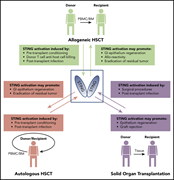
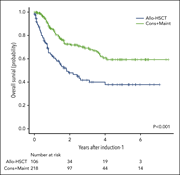

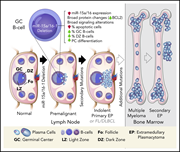
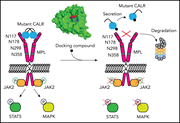

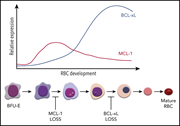
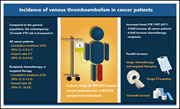


A conceptual framework for managing iTTP